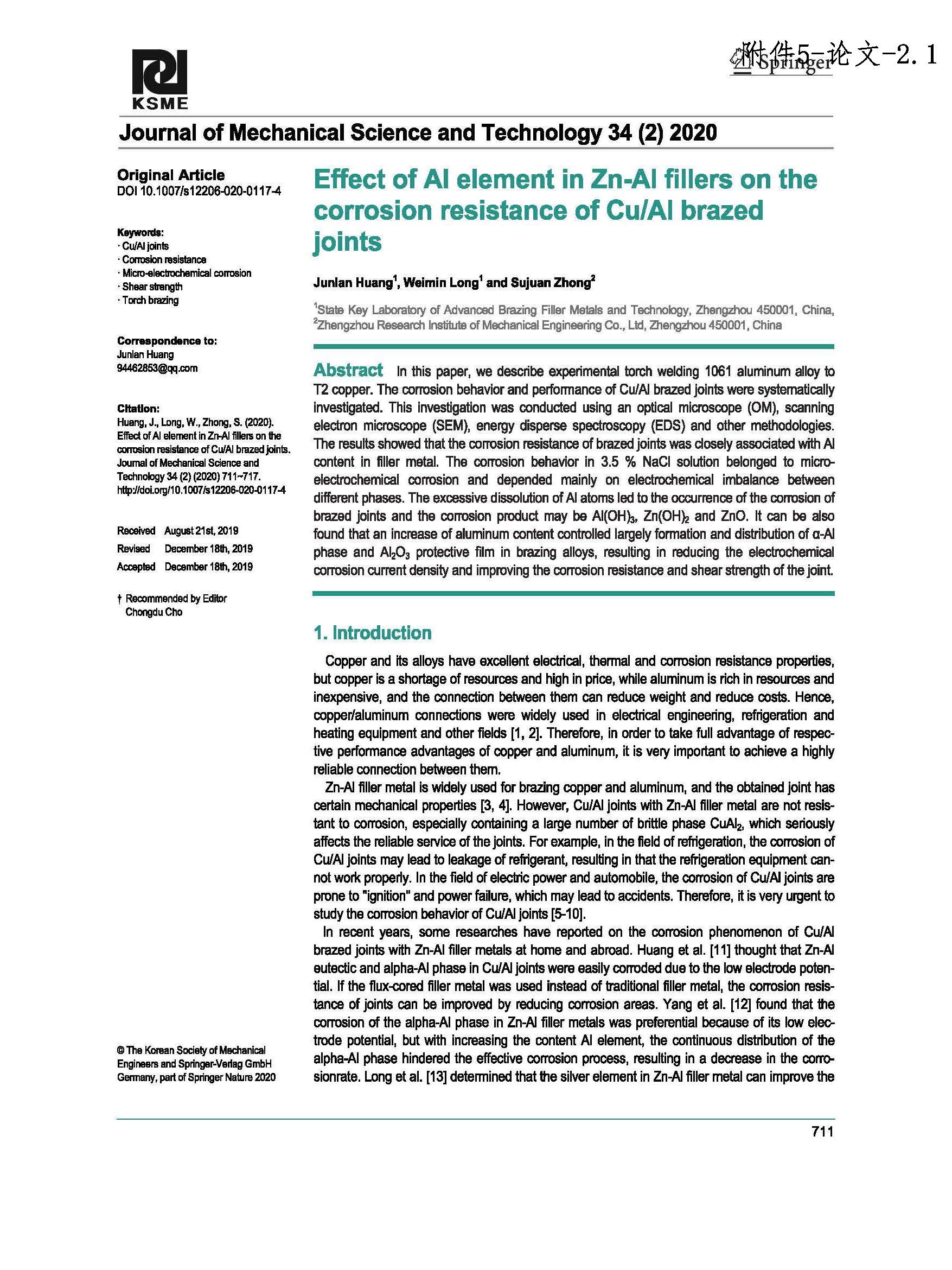In this paper, we describe experimental torch welding 1061 aluminum alloy to T2 copper. The corrosion behavior and performance of Cu/Al brazed joints were systematically investigated. This investigation was conducted using an optical microscope (OM), scanning electron microscope (SEM), energy disperse spectroscopy (EDS) and other methodologies. The results showed that the corrosion resistance of brazed joints was closely associated with Al content in filler metal. The corrosion behavior in 3.5 % NaCI solution belonged to micro-electrochemical corrosion and depended mainly on electrochemical imbalance between different phases. The excessive dissolution of Al atoms led to the occurrence of the corrosion of brazed joints and the corrosion product may be Al(OH)3, Zn(OH)2 and ZnO. It can be also found that an increase of aluminum content controlled largely formation and distribution of α-Al phase and Al2O3 protective film in brazing alloys, resulting in reducing the electrochemical corrosion current density and improving the corrosion resistance and shear strength of the joint.
